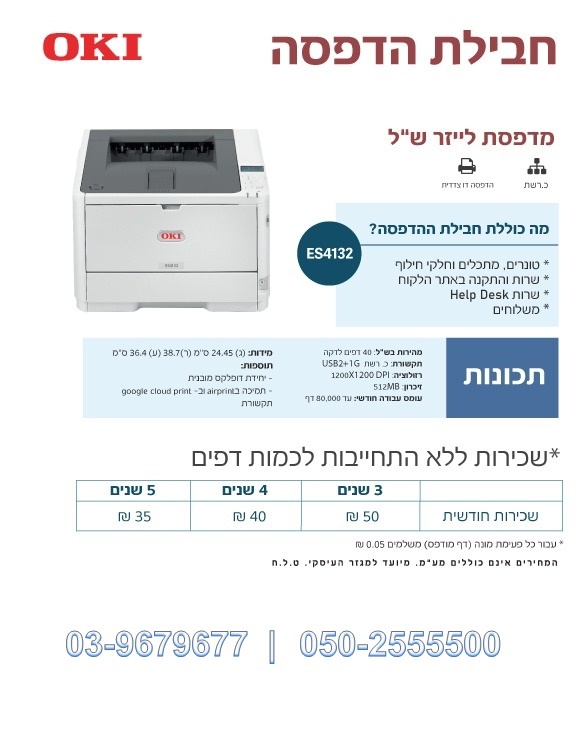.png)
מדפסת לייזר שחור לבן אמינה למשרד ביתי או עסק זירוקס Xerox B310 B310V_DNI 600x600DPI 40PPM A4 Black and White Laser Printer

מדפסת לייזר צבע משולבת מחודשת HP Color LaserJet Pro M479fdw - השכרת מדפסות ומכונות צילום למשרדים ועסקים פרינטק מיכון משרדי בע״מ

מדפסות לייזר צבעוניות משולבות מומלצות | קופיטק - משווקים את המותגים המובילים בעולם - יצרן: Brother - קופיטק שירותי הדפסה | מדפסות לייזר ותלת מימד, סורקים, מגרסות וכל הציוד למשרד

Lexmark מדפסת לייזר מונוכרום MS823dn למשרד, הדפסה דו צדדית, מהירות הדפסה 65 ppm, תצוגת LCD צבעונית 2.4 אינץ', 1200 DPI, שחור/אפור (50G0200)

Amazon.com: מדפסת לייזר מונוכרום Brother MFCL2710DW, רשת אלחוטית, הדפסת דופלקס, כוללת ניסיון מנוי רענון לארבעה חודשים ומוכן לחידוש Amazon Dash : מוצרים למשרד

מדפסות לייזר משולבות | מדפסת לייזר סמסונג - טונטק - מדפסות לייזר | טונרים וראשי דיו | מדפסות סמסונג - tontech

Brother HL-L3210CW מדפסת לייזר צבעונית אלחוטית USB ואלחוטית למשרד עסקי ביתי - פונקציה אחת: הדפסה בלבד - 600 x 2400 dpi, קיבולת גדולה של 250 גיליונות, ...

















